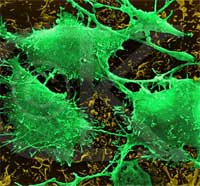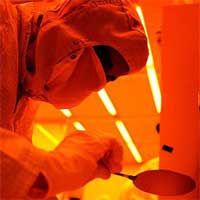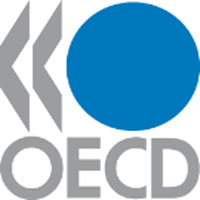Showing Spotlights 65 - 72 of 87 in category All (newest first):
 Governments always struggle when faced with regulating highly complex subject matters such as nanotechnologies. Primarily concerned with managing the potential risks to the environment, human health and the safety of workers (EHS), regulators often feel overwhelmed by the complexity and novelty of new technologies, stymied by a lack of data, and confused by conflicting research findings and advice from various interest groups. In the meantime, against a backdrop of a legal environment that ranges from gaping holes to regulatory vacuum, research organizations and early-adopting industry players push ahead with the new technology. Not being able to create any breathing room for lengthy political and legal considerations, the last 15-20 years have seen several governments adopting voluntary environmental programs (VEPs), arguing that this is the only viable proportional option for the time being. It is estimated that there are some 300 VEPs in the European Union and over 200 in the United States, dealing with matters such as climate change, energy, waste, water, toxic materials, agriculture, manufacturing, mining, forestry, hotels, hospitals, and financial institutions. If these voluntary programs work is subject to debate - some apparently do, some less so. In the case of manufactured nanomaterials, the risk properties remain largely unknown and it is unclear what exactly should be regulated. For the VEPs that are in place for nanomaterials, governments are urging companies to submit health and safety information on the nanomaterials they produce or commercialize. In order to investigate whether voluntary government programs will be sufficient to ensure the safety of manufactured nanomaterials, researchers have analyzed a sampling of voluntary programs in the fields of environmental health and safety in the United States over the past 20 years, with a view towards their applicability in the case of manufactured nanomaterials
Governments always struggle when faced with regulating highly complex subject matters such as nanotechnologies. Primarily concerned with managing the potential risks to the environment, human health and the safety of workers (EHS), regulators often feel overwhelmed by the complexity and novelty of new technologies, stymied by a lack of data, and confused by conflicting research findings and advice from various interest groups. In the meantime, against a backdrop of a legal environment that ranges from gaping holes to regulatory vacuum, research organizations and early-adopting industry players push ahead with the new technology. Not being able to create any breathing room for lengthy political and legal considerations, the last 15-20 years have seen several governments adopting voluntary environmental programs (VEPs), arguing that this is the only viable proportional option for the time being. It is estimated that there are some 300 VEPs in the European Union and over 200 in the United States, dealing with matters such as climate change, energy, waste, water, toxic materials, agriculture, manufacturing, mining, forestry, hotels, hospitals, and financial institutions. If these voluntary programs work is subject to debate - some apparently do, some less so. In the case of manufactured nanomaterials, the risk properties remain largely unknown and it is unclear what exactly should be regulated. For the VEPs that are in place for nanomaterials, governments are urging companies to submit health and safety information on the nanomaterials they produce or commercialize. In order to investigate whether voluntary government programs will be sufficient to ensure the safety of manufactured nanomaterials, researchers have analyzed a sampling of voluntary programs in the fields of environmental health and safety in the United States over the past 20 years, with a view towards their applicability in the case of manufactured nanomaterials
Nov 29th, 2007
 The benefits of new technologies, whether they are new medical treatments, an innovative approach to farming or new ways of generating energy, almost always come with some new risks as well. In the emerging stages of a new technology, experts and the public generally differ in their perceptions of risk. While this might be due to social and demographic factors, it is generally assumed by scientists who conduct risk research that experts' risk assessments are based more strongly on actual or perceived knowledge about a technology than lay people's risk assessments. Nevertheless, whether the risks are real or not, the public perception of an emerging technology will have a major influence on the acceptance of this technology and its commercial success. If the public perception turns negative, potentially beneficial technologies will be severely constrained as is the case for instance with gene technology. It is not surprising that a new study found that, in general, nanoscientists are more optimistic than the public about the potential benefits of nanotechnology. What is surprising though, is that, for some issues related to the environmental and long-term health impacts of nanotechnology, nanoscientists seem to be significantly more concerned than the public.
The benefits of new technologies, whether they are new medical treatments, an innovative approach to farming or new ways of generating energy, almost always come with some new risks as well. In the emerging stages of a new technology, experts and the public generally differ in their perceptions of risk. While this might be due to social and demographic factors, it is generally assumed by scientists who conduct risk research that experts' risk assessments are based more strongly on actual or perceived knowledge about a technology than lay people's risk assessments. Nevertheless, whether the risks are real or not, the public perception of an emerging technology will have a major influence on the acceptance of this technology and its commercial success. If the public perception turns negative, potentially beneficial technologies will be severely constrained as is the case for instance with gene technology. It is not surprising that a new study found that, in general, nanoscientists are more optimistic than the public about the potential benefits of nanotechnology. What is surprising though, is that, for some issues related to the environmental and long-term health impacts of nanotechnology, nanoscientists seem to be significantly more concerned than the public.
Nov 26th, 2007
 Cancer is an enormous socio-economic problem. According to the National Cancer Institute (NCI), it is estimated that in 2007 there will be over 1.4 million new cases of cancer (of any type) and over 550,000 deaths from cancer in the United States (you can download a detailed Cancer Statistics 2007 Presentation; ppt download, 808 KB) from the American Cancer Society. This makes cancer the second deadliest disease category, after heart diseases. But while the mortality rates for heart diseases have dropped by more than half from 1950 to 2004, and other major disease categories show similar trends, cancer death rates have stayed pretty much the same. Shocking but true, if you are a male living in the U.S., your lifetime probability of developing some type of cancer is 1 in 2. If you are female, your probability is 1 in 3. Equally dismal are the economic cost associated with this disease: The amount of direct cancer-related costs (treatment, care and rehabilitation) have reached $74 billion in the U.S. in 2005, and growing fast, while the overall economic costs (including loss of economic output due to days off and premature death) are estimated to be over $200 billion per year (2005 data). This Spotlight will discuss existing and new approaches to fight cancer and their limitations. The goal is to stimulate readers to support and participate in interdisciplinary research and teaching efforts toward relieving suffering and death due to cancer. Fighting cancer involves three phases: (i) detection, (ii) treatment, and (iii) monitoring. Success depends on matching science to the actual practical needs. We'll take a look at - in particular nanotechnology - efforts underway in the direction of these three phases and comment on some of the practical problems encountered fighting cancer. We also speculate about some unconventional research that might be successful fighting cancer in the future.
Cancer is an enormous socio-economic problem. According to the National Cancer Institute (NCI), it is estimated that in 2007 there will be over 1.4 million new cases of cancer (of any type) and over 550,000 deaths from cancer in the United States (you can download a detailed Cancer Statistics 2007 Presentation; ppt download, 808 KB) from the American Cancer Society. This makes cancer the second deadliest disease category, after heart diseases. But while the mortality rates for heart diseases have dropped by more than half from 1950 to 2004, and other major disease categories show similar trends, cancer death rates have stayed pretty much the same. Shocking but true, if you are a male living in the U.S., your lifetime probability of developing some type of cancer is 1 in 2. If you are female, your probability is 1 in 3. Equally dismal are the economic cost associated with this disease: The amount of direct cancer-related costs (treatment, care and rehabilitation) have reached $74 billion in the U.S. in 2005, and growing fast, while the overall economic costs (including loss of economic output due to days off and premature death) are estimated to be over $200 billion per year (2005 data). This Spotlight will discuss existing and new approaches to fight cancer and their limitations. The goal is to stimulate readers to support and participate in interdisciplinary research and teaching efforts toward relieving suffering and death due to cancer. Fighting cancer involves three phases: (i) detection, (ii) treatment, and (iii) monitoring. Success depends on matching science to the actual practical needs. We'll take a look at - in particular nanotechnology - efforts underway in the direction of these three phases and comment on some of the practical problems encountered fighting cancer. We also speculate about some unconventional research that might be successful fighting cancer in the future.
Oct 31st, 2007
 In the art world, the topic of conservancy is a heated one. Some believe that the world's most precious works of art should be allowed to age and die gracefully, while others believe they should be protected and restored at all costs. Art conservation and restoration is not a modern phenomenon. Within 20 years of its 1497 completion, one of the world's most well-known and admired works of art, The Last Supper, was already beginning to show signs of wear and exposure. In 1726, the first of many restorations (or attempted restorations) occurred, followed by additional restorations in 1901, 1908, 1924, and 1951. The deterioration proved unstoppable, while the effects of pollution added to the masterpiece's worsening condition. Between 1978 and 1999, another major restoration effort was undertaken. In 1981, the decision by the Vatican to restore the Sistine Chapel's ceiling sparked a tremendous debate. Today, the Mona Lisa stirs similar debate. Although the world's most famous painting has severe yellowing and shows other signs of aging (it is 500 years old after all), the Louvre has adamantly refused to even consider restoration or cleaning. You can't really blame them. While the cleaning and restoration of the Sistine Chapel and the Last Supper has certainly improved their visibility, restoration is not an exact science and the process could save or destroy the famous work. In fact, much of the yellowing we see today on masterpieces such as the Mona Lisa and the Last Supper are the result of varnishes originally applied to protect the paintings. The process of cleaning and removing old varnish is a tedious and painstaking process, but Italian chemists may have found a much better, and safer, process with the help of nanoparticles.
In the art world, the topic of conservancy is a heated one. Some believe that the world's most precious works of art should be allowed to age and die gracefully, while others believe they should be protected and restored at all costs. Art conservation and restoration is not a modern phenomenon. Within 20 years of its 1497 completion, one of the world's most well-known and admired works of art, The Last Supper, was already beginning to show signs of wear and exposure. In 1726, the first of many restorations (or attempted restorations) occurred, followed by additional restorations in 1901, 1908, 1924, and 1951. The deterioration proved unstoppable, while the effects of pollution added to the masterpiece's worsening condition. Between 1978 and 1999, another major restoration effort was undertaken. In 1981, the decision by the Vatican to restore the Sistine Chapel's ceiling sparked a tremendous debate. Today, the Mona Lisa stirs similar debate. Although the world's most famous painting has severe yellowing and shows other signs of aging (it is 500 years old after all), the Louvre has adamantly refused to even consider restoration or cleaning. You can't really blame them. While the cleaning and restoration of the Sistine Chapel and the Last Supper has certainly improved their visibility, restoration is not an exact science and the process could save or destroy the famous work. In fact, much of the yellowing we see today on masterpieces such as the Mona Lisa and the Last Supper are the result of varnishes originally applied to protect the paintings. The process of cleaning and removing old varnish is a tedious and painstaking process, but Italian chemists may have found a much better, and safer, process with the help of nanoparticles.
Oct 22nd, 2007
 Medicine is big business. The big pharma companies have traditionally enjoyed enormous profits that would make the eyes of other companies' CEOs water (apart from big oil companies, of course). The combined annual net income for the top 10 pharma companies (ranked by market capitalization) currently is about $73 billion. Pfizer alone has a net income of approximately $19 billion. The recipe for success? Patent protection and intellectual property rights (IPRs). The core of Big Pharma's business model relies on patent protection for their blockbuster drugs, which allows them to sell these drugs at extraordinarily high profit margins that they wouldn't be able to generate in a competitive market. Point in case: Lipitor, the cholesterol-lowering drug that accounts for nearly $13 billion of Pfizer's revenues and over 40% of its profits. Another key part of the pharma business model is heavy spending on sales and marketing. Novartis, for instance, is spending around 33% of sales on promotion, compared with about 19% on R&D, although the cost of bringing a new drug to market could well exceed $1 billion (and that is also the argument pharma companies use to justify their profits). However, pharmaceutical companies are faced with the expiration of the patent protection on their main profit generators, they have relatively few new products in the pipeline, and they need to come to terms with the emerging nanomedicine landscape. While nanomedicine potentially offers promising new value propositions and revenue streams, for instance in diagnostics, it also could completely displace certain classes of drugs such as current chemotherapy agents with novel nanoparticle reformulations. In what looks like more of the same though, it seems that the future of nanomedicine business will also depend on patents and IPRs, potentially even more so than today.
Medicine is big business. The big pharma companies have traditionally enjoyed enormous profits that would make the eyes of other companies' CEOs water (apart from big oil companies, of course). The combined annual net income for the top 10 pharma companies (ranked by market capitalization) currently is about $73 billion. Pfizer alone has a net income of approximately $19 billion. The recipe for success? Patent protection and intellectual property rights (IPRs). The core of Big Pharma's business model relies on patent protection for their blockbuster drugs, which allows them to sell these drugs at extraordinarily high profit margins that they wouldn't be able to generate in a competitive market. Point in case: Lipitor, the cholesterol-lowering drug that accounts for nearly $13 billion of Pfizer's revenues and over 40% of its profits. Another key part of the pharma business model is heavy spending on sales and marketing. Novartis, for instance, is spending around 33% of sales on promotion, compared with about 19% on R&D, although the cost of bringing a new drug to market could well exceed $1 billion (and that is also the argument pharma companies use to justify their profits). However, pharmaceutical companies are faced with the expiration of the patent protection on their main profit generators, they have relatively few new products in the pipeline, and they need to come to terms with the emerging nanomedicine landscape. While nanomedicine potentially offers promising new value propositions and revenue streams, for instance in diagnostics, it also could completely displace certain classes of drugs such as current chemotherapy agents with novel nanoparticle reformulations. In what looks like more of the same though, it seems that the future of nanomedicine business will also depend on patents and IPRs, potentially even more so than today.
Oct 12th, 2007
 In an earlier Spotlight we reported on NIOSH's Nanotechnology Research Center (NTRC) and its efforts concerning the occupational safety and health perspectives of engineered nanomaterials (Nanotechnology in the workplace). Today, we are looking at the specific steps undertaken by companies active in the field. "We were receiving a steady stream of questions from industry and academia regarding what we knew about the hazards of nanomaterials," Charles L. Geraci, Branch Chief at the National Institute of Occupational Safety and Health (NIOSH) and Co-Coordinator of the NIOSH Nanotechnology Field Team, tells Nanowerk. "People were coming to NIOSH for recommendations; we knew we needed to have a better understanding of the nature of workplace exposure during research, production and use." But, in a new and relatively little studied area of industry, where does one find these answers? NIOSH already had a strong research program to address questions in the lab, says Geraci, but field data was needed to have a complete picture. "In our minds, the best way to achieve this was to do what NIOSH does best: get in the field and gather data through observation and measurement." In 2006, the concept of a field team dedicated to this effort was developed.
In an earlier Spotlight we reported on NIOSH's Nanotechnology Research Center (NTRC) and its efforts concerning the occupational safety and health perspectives of engineered nanomaterials (Nanotechnology in the workplace). Today, we are looking at the specific steps undertaken by companies active in the field. "We were receiving a steady stream of questions from industry and academia regarding what we knew about the hazards of nanomaterials," Charles L. Geraci, Branch Chief at the National Institute of Occupational Safety and Health (NIOSH) and Co-Coordinator of the NIOSH Nanotechnology Field Team, tells Nanowerk. "People were coming to NIOSH for recommendations; we knew we needed to have a better understanding of the nature of workplace exposure during research, production and use." But, in a new and relatively little studied area of industry, where does one find these answers? NIOSH already had a strong research program to address questions in the lab, says Geraci, but field data was needed to have a complete picture. "In our minds, the best way to achieve this was to do what NIOSH does best: get in the field and gather data through observation and measurement." In 2006, the concept of a field team dedicated to this effort was developed.
Oct 9th, 2007
 Flawed government thinking is driving a rapid expansion in the military influence over science and technology, says a new briefing from Scientists for Global Responsibility (SGR). US government spending on military research and development is soaring (up 57% since 2001), while the UK government has rolled out two new military technology strategies in the last two years. Factors such as these are contributing to an expansion of military involvement in US and UK universities. As far as nanotechnology is concerned, and as we have reported here before, the military is the largest investor in the U.S. Nanotechnology Initiative (NNI). The Department of Defense (DoD)'s share of the $6.6 billion NNI budget since the program's inception is over 30%, or $2 billion. While a part of this military research spend goes to the internal laboratories of the various parts of the armed services (navy, army, air force) and DARPA, another parts goes to universities as research grants or as part of MURI (Multi-University Research Initiative). The SGR, in its new briefing, documents how government funding for military research and development dwarfs that spent on social and environmental programs across the industrialized world. The group highlights how the military involvement in research continues to support a narrow weapons-based security agenda. SRG argues that this marginalizes a broader approach to security, which would give much greater priority to supporting conflict prevention by helping to address the roots of conflict. As part of this case, they point out how research that aims to help tackle poverty, climate change and ill-health - and thus help to provide basic security for human populations - is under-funded compared with military research.
Flawed government thinking is driving a rapid expansion in the military influence over science and technology, says a new briefing from Scientists for Global Responsibility (SGR). US government spending on military research and development is soaring (up 57% since 2001), while the UK government has rolled out two new military technology strategies in the last two years. Factors such as these are contributing to an expansion of military involvement in US and UK universities. As far as nanotechnology is concerned, and as we have reported here before, the military is the largest investor in the U.S. Nanotechnology Initiative (NNI). The Department of Defense (DoD)'s share of the $6.6 billion NNI budget since the program's inception is over 30%, or $2 billion. While a part of this military research spend goes to the internal laboratories of the various parts of the armed services (navy, army, air force) and DARPA, another parts goes to universities as research grants or as part of MURI (Multi-University Research Initiative). The SGR, in its new briefing, documents how government funding for military research and development dwarfs that spent on social and environmental programs across the industrialized world. The group highlights how the military involvement in research continues to support a narrow weapons-based security agenda. SRG argues that this marginalizes a broader approach to security, which would give much greater priority to supporting conflict prevention by helping to address the roots of conflict. As part of this case, they point out how research that aims to help tackle poverty, climate change and ill-health - and thus help to provide basic security for human populations - is under-funded compared with military research.
Aug 22nd, 2007
 The Organization for Economic Co-operation and Development (OECD) is an intergovernmental organization in which representatives of 30 industrialized countries in North America, Europe and the Asia and Pacific region, as well as the European Commission, meet to co-ordinate and harmonize policies, discuss issues of mutual concern, and work together to respond to international problems. Most of the OECD's work is carried out by more than 200 specialized committees and working groups composed of member country delegates. The OECD's Environment, Health and Safety Division has taken up the safety of nanomaterials as one of their priority issues. After several preliminary meetings in 2005 and 2006, the OECD's Chemical Committee set up a Working Party to address the health and environmental safety implications of manufactured nanomaterials (the WPMN). After a meeting in Berlin, Germany earlier this year, the WPMN has just released a document that compiles information provided by member countries and other delegations on current developments on the safety of manufactured nanomaterials in their countries or organizations and also on current activities related to nanotechnologies and nanomaterials in other International Organizations such as the International Organization for Standardization (ISO). The report makes clear that there are numerous projects and initiatives going on with regard to nanotechnology safety research. It would be nice at some point to see all these research results come together in one coherent and conclusive set of results as to where and what the risks are and how they will be controlled and managed.
The Organization for Economic Co-operation and Development (OECD) is an intergovernmental organization in which representatives of 30 industrialized countries in North America, Europe and the Asia and Pacific region, as well as the European Commission, meet to co-ordinate and harmonize policies, discuss issues of mutual concern, and work together to respond to international problems. Most of the OECD's work is carried out by more than 200 specialized committees and working groups composed of member country delegates. The OECD's Environment, Health and Safety Division has taken up the safety of nanomaterials as one of their priority issues. After several preliminary meetings in 2005 and 2006, the OECD's Chemical Committee set up a Working Party to address the health and environmental safety implications of manufactured nanomaterials (the WPMN). After a meeting in Berlin, Germany earlier this year, the WPMN has just released a document that compiles information provided by member countries and other delegations on current developments on the safety of manufactured nanomaterials in their countries or organizations and also on current activities related to nanotechnologies and nanomaterials in other International Organizations such as the International Organization for Standardization (ISO). The report makes clear that there are numerous projects and initiatives going on with regard to nanotechnology safety research. It would be nice at some point to see all these research results come together in one coherent and conclusive set of results as to where and what the risks are and how they will be controlled and managed.
Aug 20th, 2007
 Governments always struggle when faced with regulating highly complex subject matters such as nanotechnologies. Primarily concerned with managing the potential risks to the environment, human health and the safety of workers (EHS), regulators often feel overwhelmed by the complexity and novelty of new technologies, stymied by a lack of data, and confused by conflicting research findings and advice from various interest groups. In the meantime, against a backdrop of a legal environment that ranges from gaping holes to regulatory vacuum, research organizations and early-adopting industry players push ahead with the new technology. Not being able to create any breathing room for lengthy political and legal considerations, the last 15-20 years have seen several governments adopting voluntary environmental programs (VEPs), arguing that this is the only viable proportional option for the time being. It is estimated that there are some 300 VEPs in the European Union and over 200 in the United States, dealing with matters such as climate change, energy, waste, water, toxic materials, agriculture, manufacturing, mining, forestry, hotels, hospitals, and financial institutions. If these voluntary programs work is subject to debate - some apparently do, some less so. In the case of manufactured nanomaterials, the risk properties remain largely unknown and it is unclear what exactly should be regulated. For the VEPs that are in place for nanomaterials, governments are urging companies to submit health and safety information on the nanomaterials they produce or commercialize. In order to investigate whether voluntary government programs will be sufficient to ensure the safety of manufactured nanomaterials, researchers have analyzed a sampling of voluntary programs in the fields of environmental health and safety in the United States over the past 20 years, with a view towards their applicability in the case of manufactured nanomaterials
Governments always struggle when faced with regulating highly complex subject matters such as nanotechnologies. Primarily concerned with managing the potential risks to the environment, human health and the safety of workers (EHS), regulators often feel overwhelmed by the complexity and novelty of new technologies, stymied by a lack of data, and confused by conflicting research findings and advice from various interest groups. In the meantime, against a backdrop of a legal environment that ranges from gaping holes to regulatory vacuum, research organizations and early-adopting industry players push ahead with the new technology. Not being able to create any breathing room for lengthy political and legal considerations, the last 15-20 years have seen several governments adopting voluntary environmental programs (VEPs), arguing that this is the only viable proportional option for the time being. It is estimated that there are some 300 VEPs in the European Union and over 200 in the United States, dealing with matters such as climate change, energy, waste, water, toxic materials, agriculture, manufacturing, mining, forestry, hotels, hospitals, and financial institutions. If these voluntary programs work is subject to debate - some apparently do, some less so. In the case of manufactured nanomaterials, the risk properties remain largely unknown and it is unclear what exactly should be regulated. For the VEPs that are in place for nanomaterials, governments are urging companies to submit health and safety information on the nanomaterials they produce or commercialize. In order to investigate whether voluntary government programs will be sufficient to ensure the safety of manufactured nanomaterials, researchers have analyzed a sampling of voluntary programs in the fields of environmental health and safety in the United States over the past 20 years, with a view towards their applicability in the case of manufactured nanomaterials
 Subscribe to our Nanotechnology Spotlight feed
Subscribe to our Nanotechnology Spotlight feed





